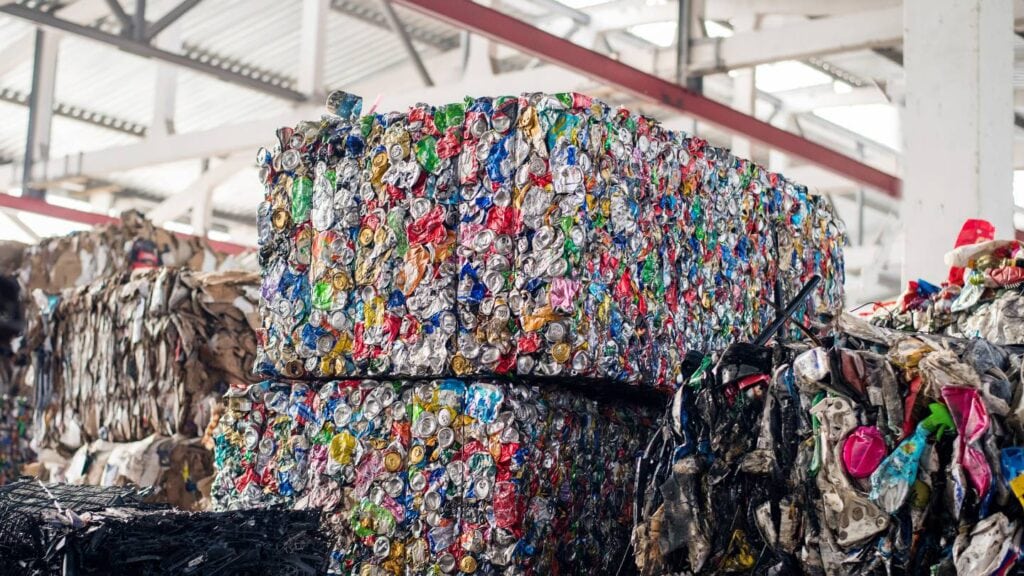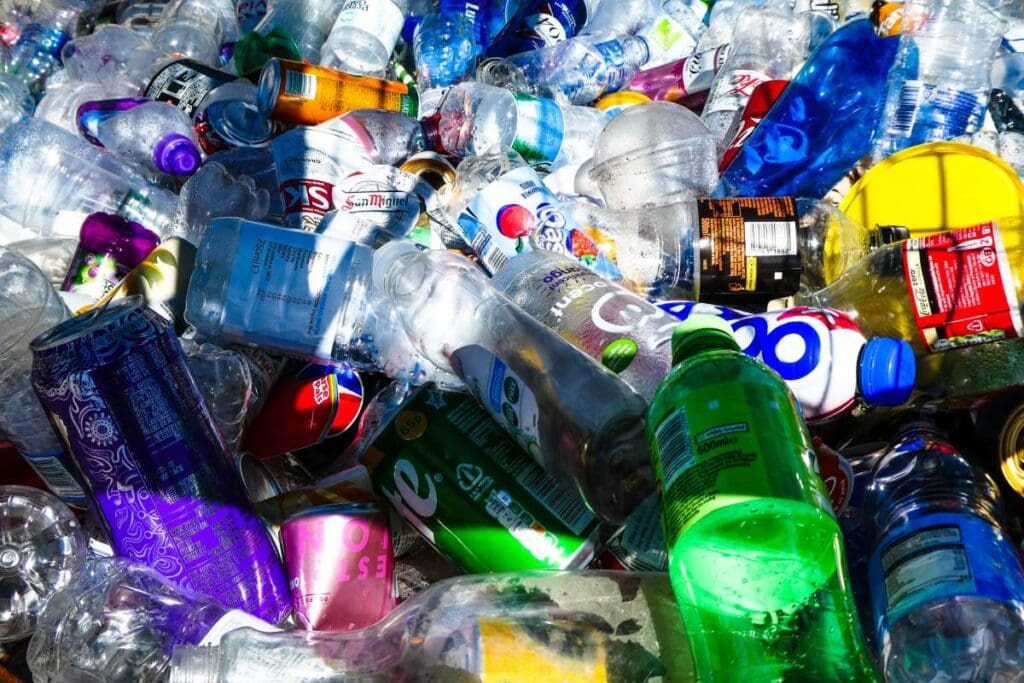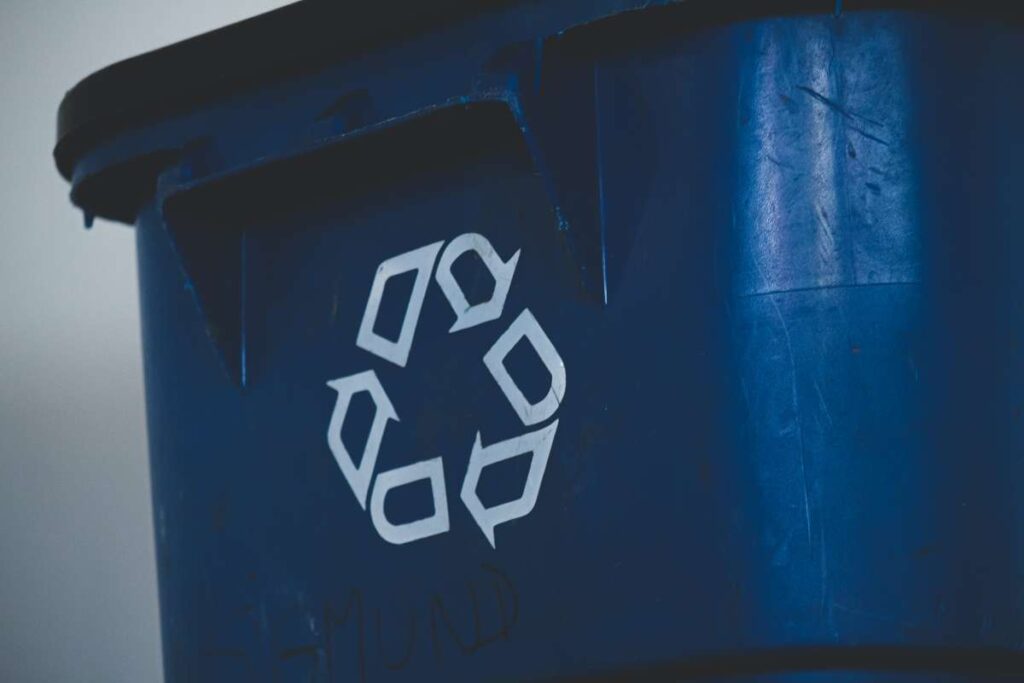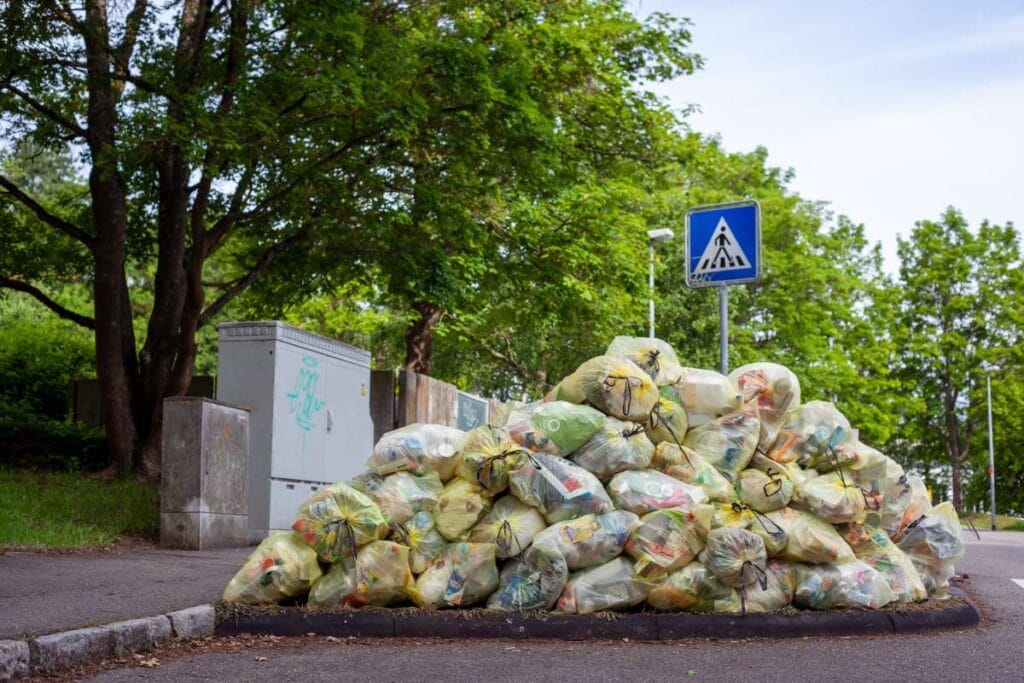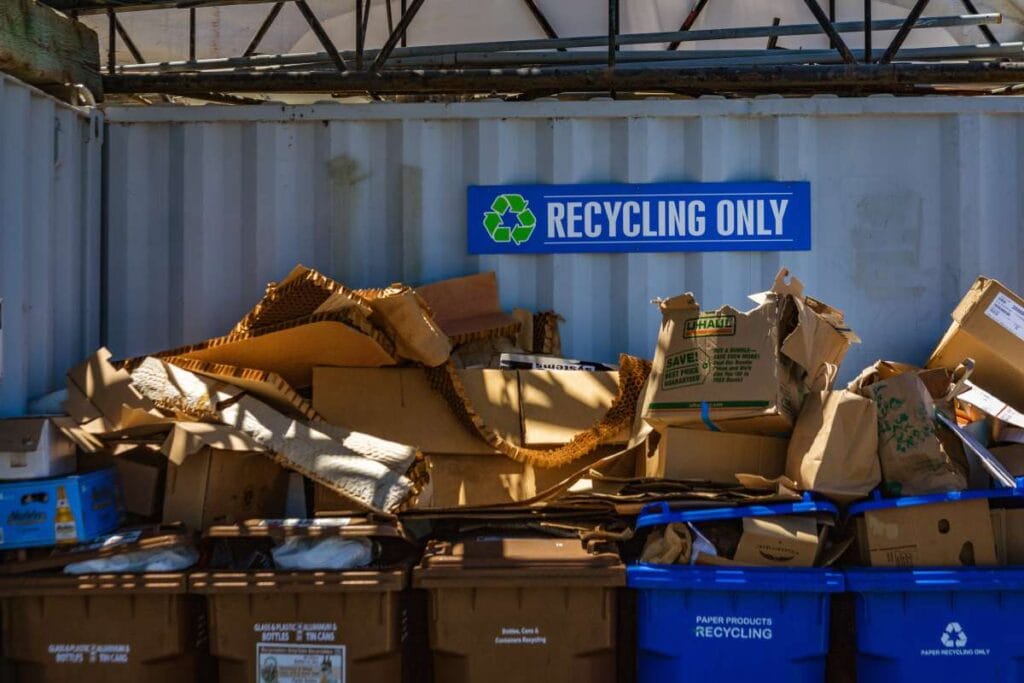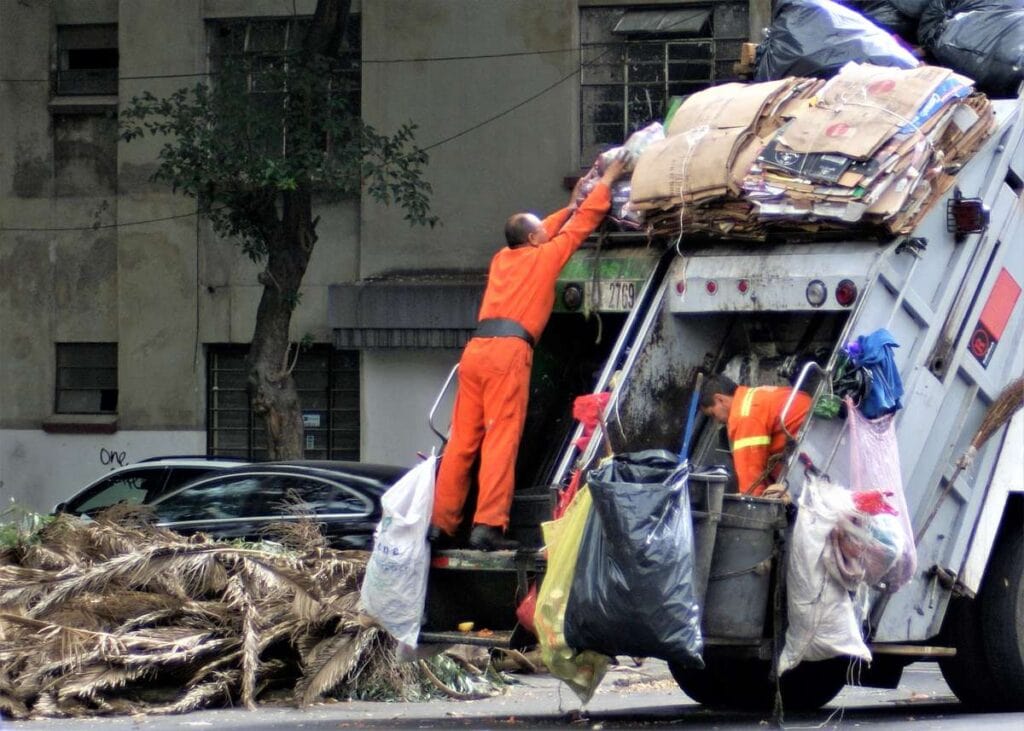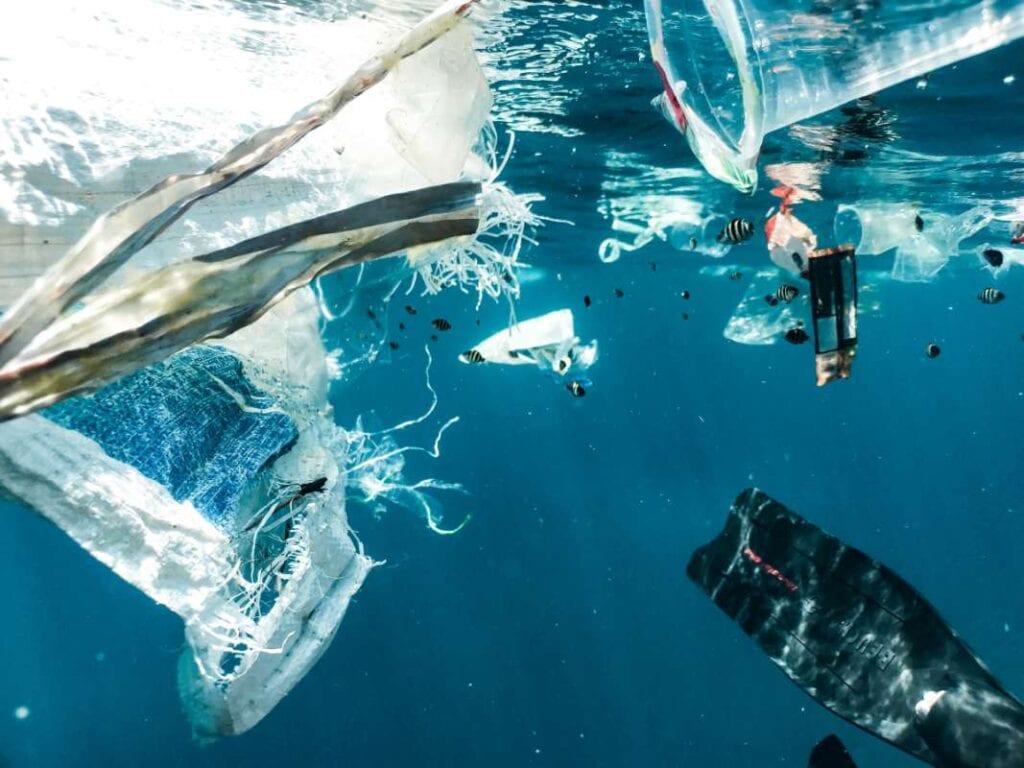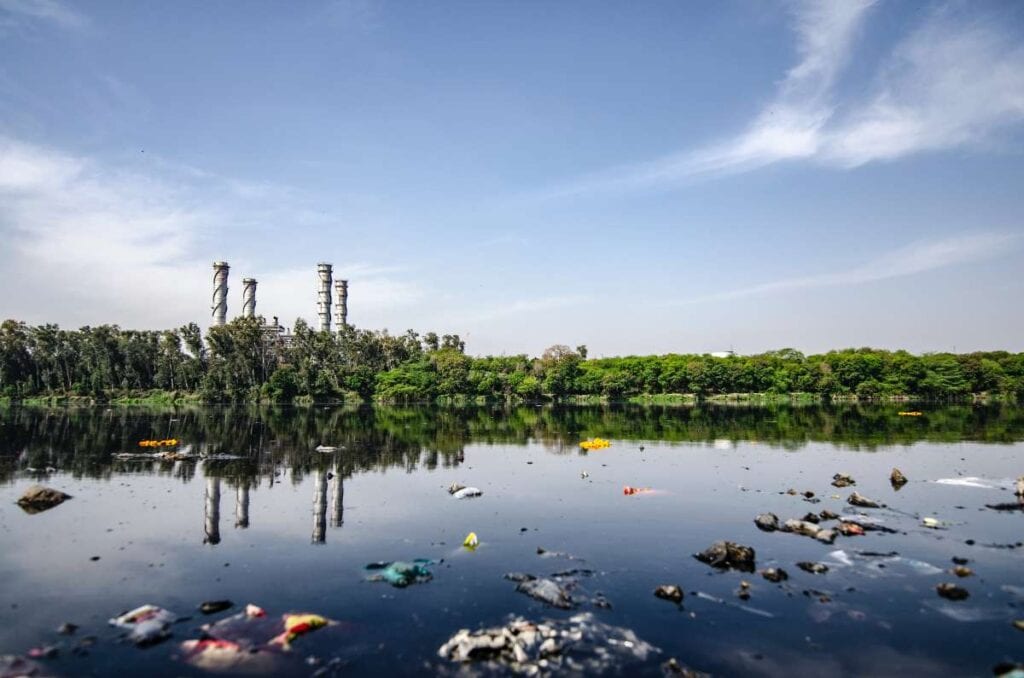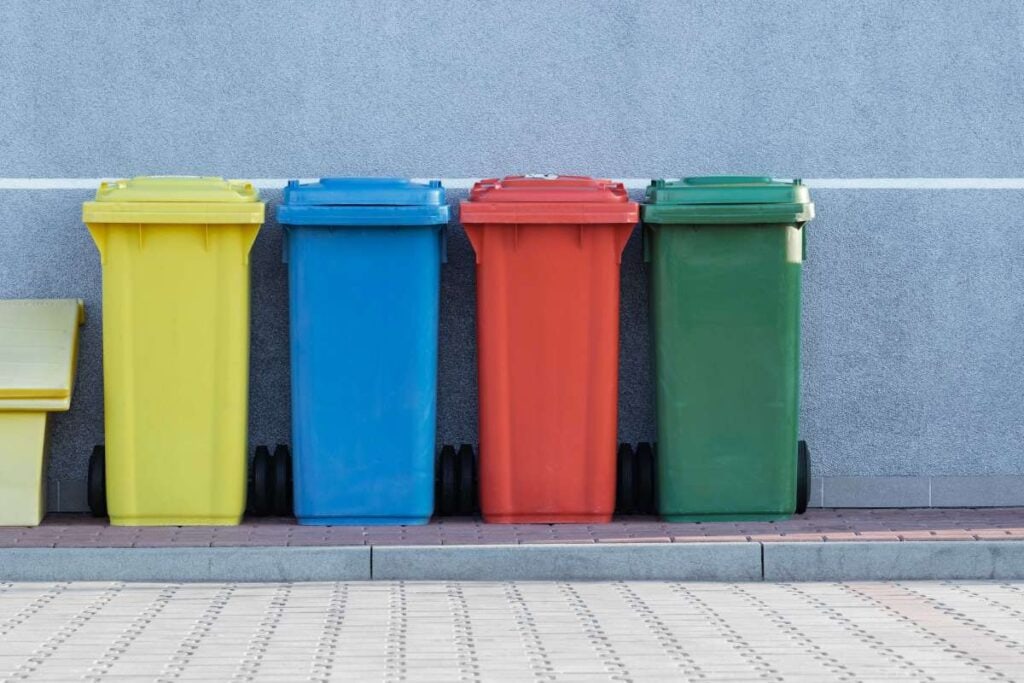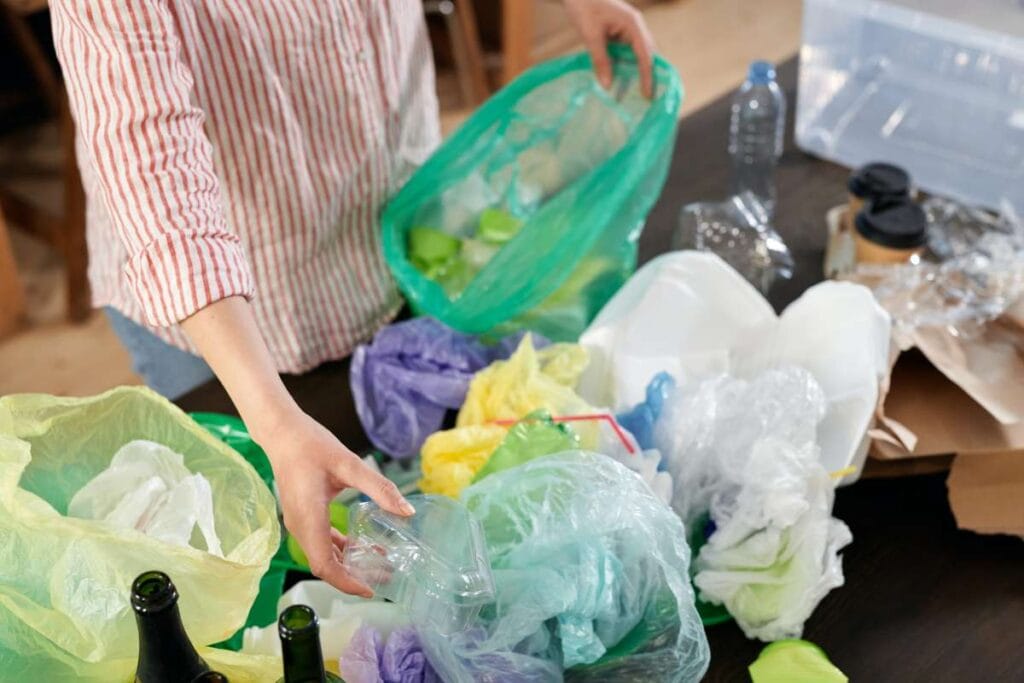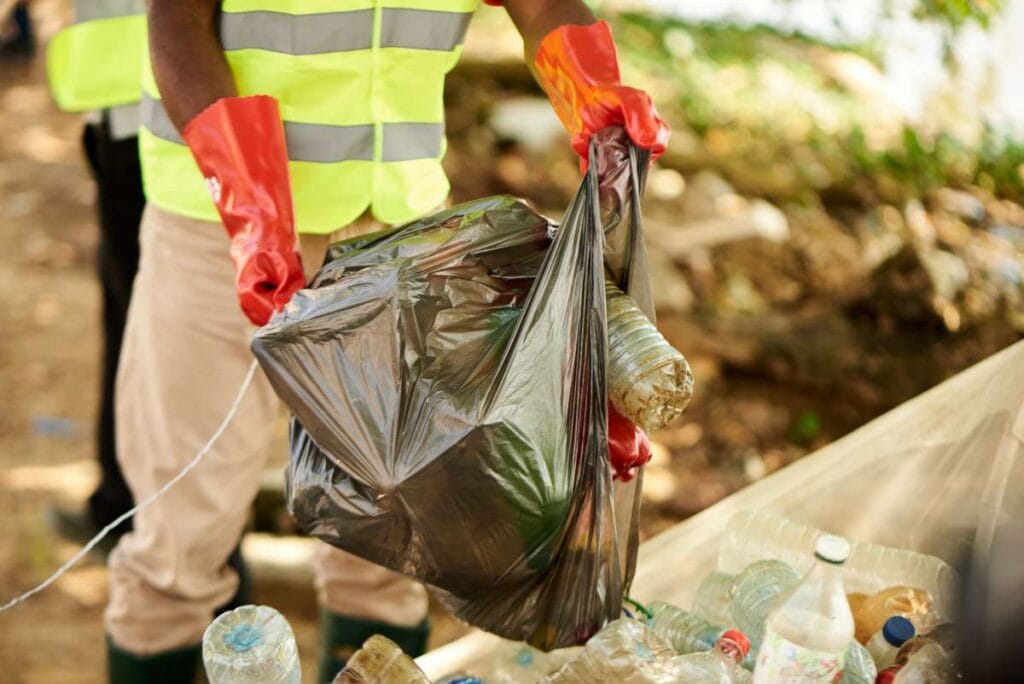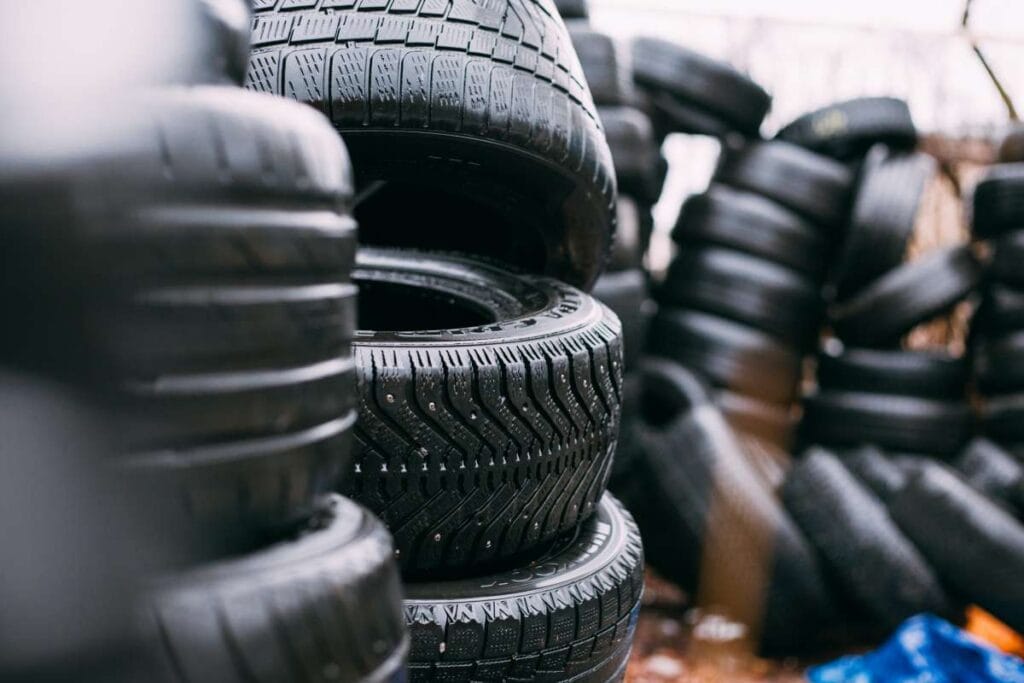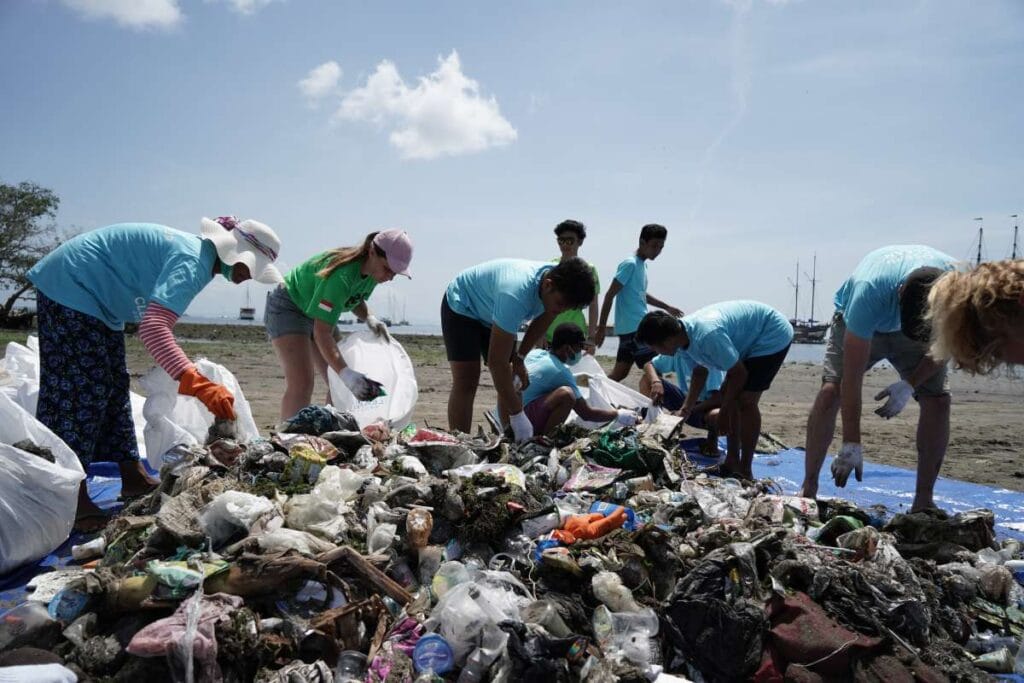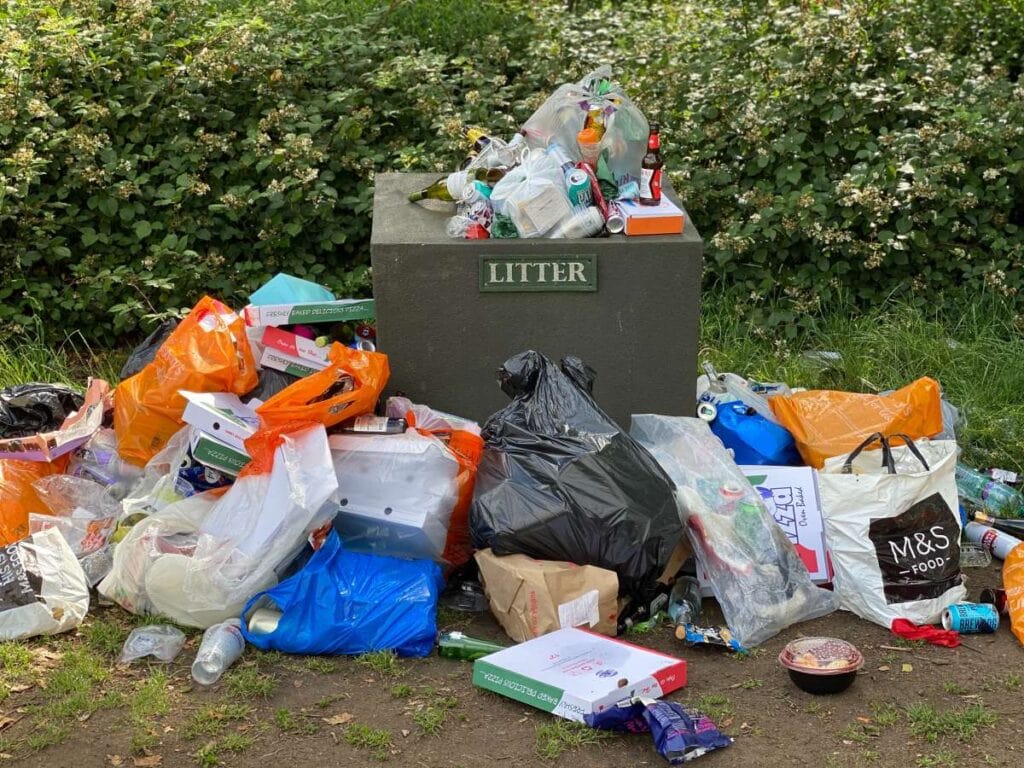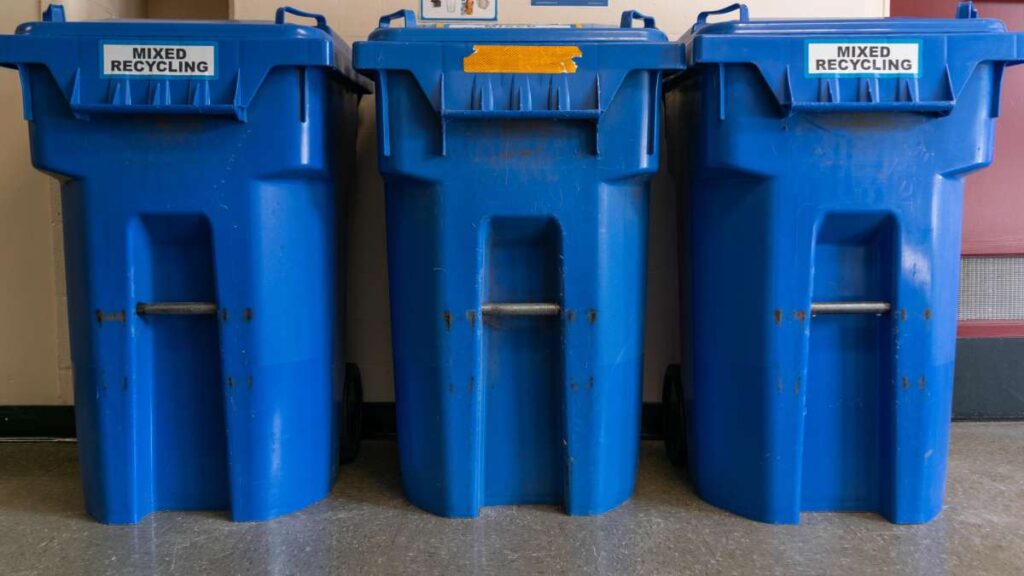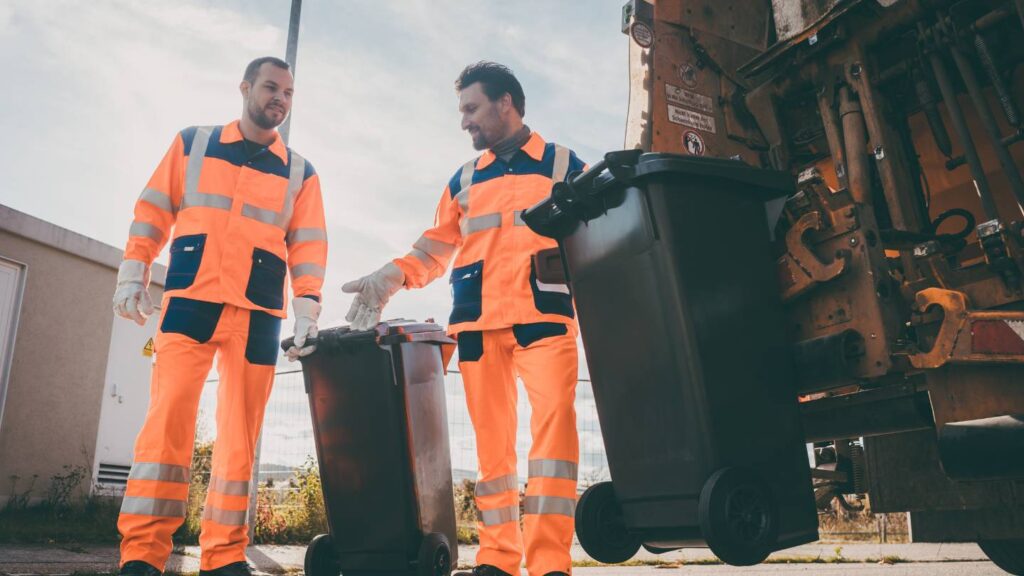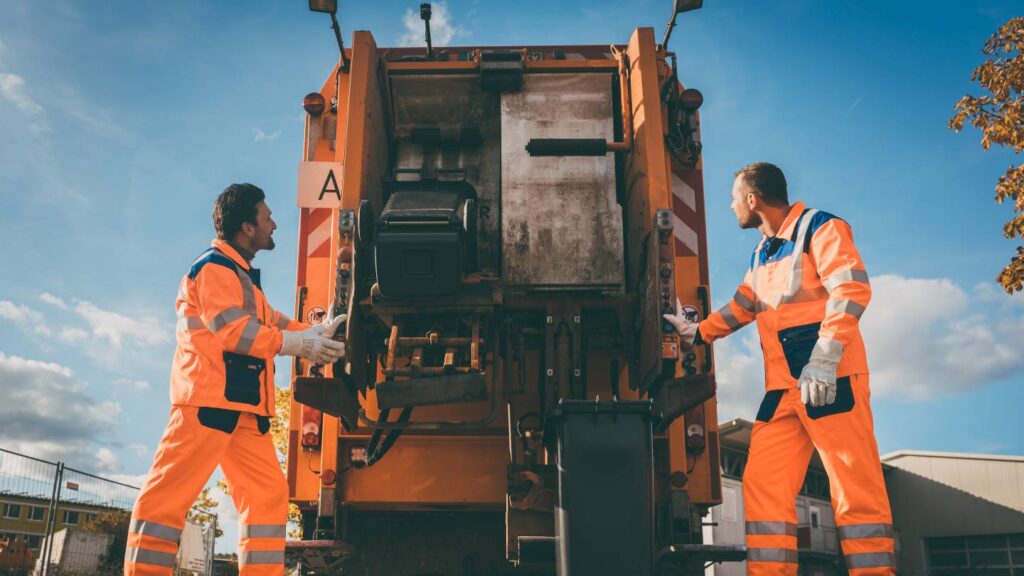Waste management has grown in importance in this era of eco-consciousness and sustainable lifestyles as a means to an end—a cleaner, healthier Earth. Garbage collection, which includes more than just dumping but also recycling and upcycling, is a major actor in this field. This blog seeks to explore the complexities of how waste management companies use recycling and upcycling to reduce their environmental footprint and promote a circular economy.
Understanding Rubbish Problem
As landfills fill up and the oceans take a beating from all our trash, humanity faces a garbage catastrophe like never before. Disposal practices that have been around for a while are harmful to the environment and cannot be sustained. Recycling and upcycling have developed into essential parts of waste management as trash removal services have evolved in response to the need for creative solutions.
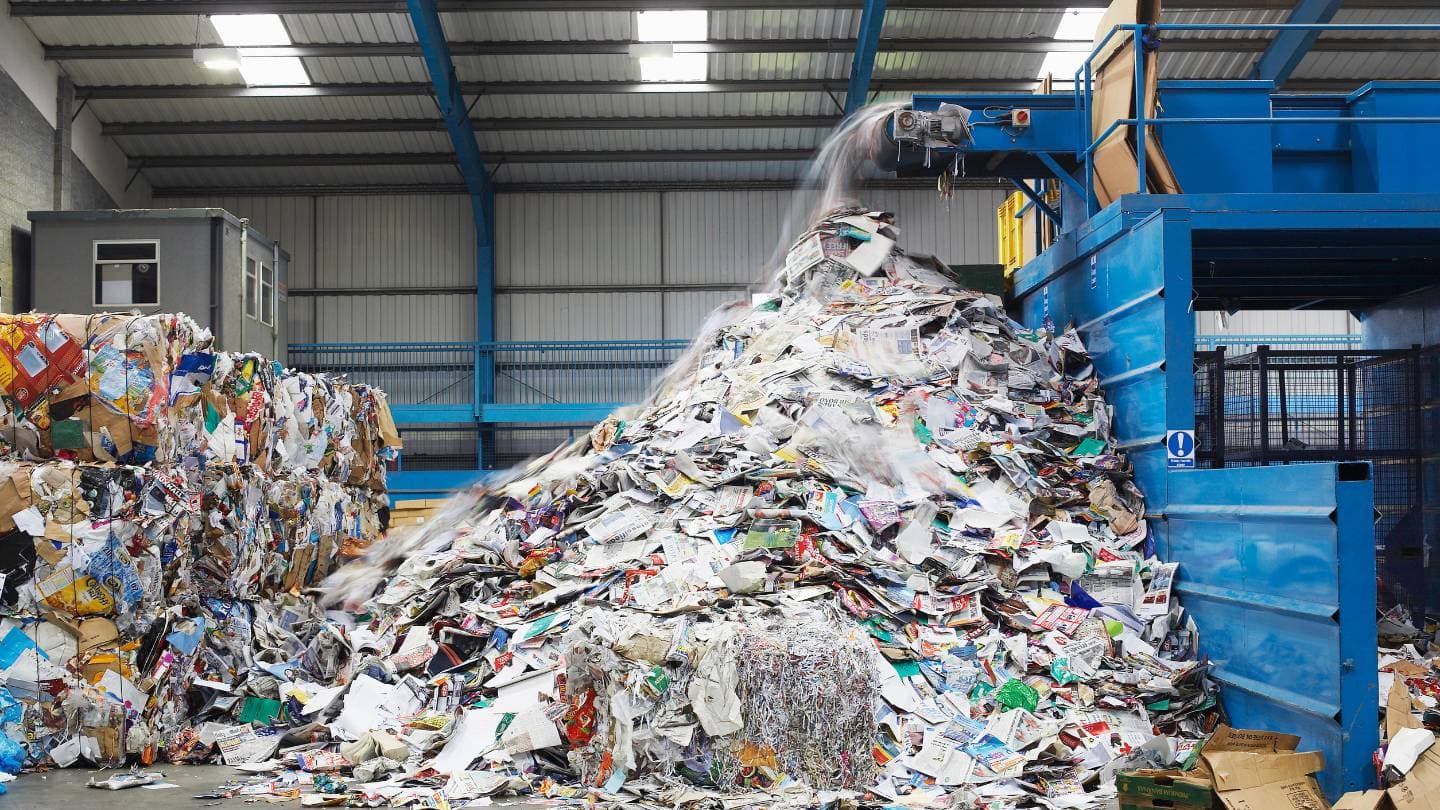
Environmental Consequences of Landfills
Landfills, once considered a convenient solution for waste disposal, are now recognized as major contributors to environmental degradation. These sites pose a threat to soil and groundwater quality through the leaching of harmful chemicals from decomposing waste. Additionally, releasing methane gas during decomposition exacerbates climate change, emphasizing the need for alternative waste management strategies.
Ocean Pollution
The oceans, vital to the planet's health, bear the brunt of our unsustainable waste practices. Plastic and other debris contaminate marine ecosystems, posing significant risks to aquatic life. The formation of vast areas known as garbage patches, such as the notorious Great Pacific Garbage Patch, underscores the interconnectedness of land-based waste disposal and the far-reaching consequences on ocean health.
Unsustainable Disposal Practices
Traditional waste disposal methods, such as landfilling and incineration, have proven ecologically harmful and economically unsustainable. These practices perpetuate a linear model of resource use and waste generation, contributing to the depletion of natural resources and exacerbating environmental issues. The situation's urgency has prompted a reevaluation of these practices, necessitating a shift towards more innovative and sustainable waste management solutions.
Evolution of Trash Removal Services
Trash removal services once primarily focused on the transportation and disposal of waste, have transformed into proactive agents in the fight against the garbage catastrophe. Adopting recycling and upcycling practices showcases a commitment to breaking free from the linear resource consumption model.
These services play a crucial role in mitigating the environmental impact of waste and fostering a circular economy where resources are continuously utilized in a closed loop.
Recycling: A Pillar of Sustainable Rubbish Removal
Recycling is a cornerstone of sustainable waste management, diverting materials from landfills and giving them a second life. Rubbish removal services play a pivotal role by systematically collecting, sorting, and transporting recyclable materials to specialized facilities. These materials include paper, plastic, glass, and metals, which can be transformed into new products through various recycling processes.
Collection and Sorting:
Rubbish removal services initiate recycling by collecting waste from households, businesses, and public spaces. The collection phase involves the careful separation of recyclable materials from non-recyclables. Advanced sorting technologies streamline this process, ensuring materials are efficiently categorized based on composition.
Transportation to Recycling Facilities:
Once the recyclables are sorted, rubbish removal services transport them to specialized recycling facilities. These facilities are equipped with advanced machinery that further refines the sorting process and prepares the materials for the next recycling stages. Transportation efficiency is crucial in minimizing the carbon footprint associated with waste management, and many rubbish removal companies have adopted eco-friendly vehicles for this purpose.
Processing and Transformation:
Recyclables undergo distinct processes based on their material type. For instance, paper and cardboard are pulped and reprocessed into new paper products. At the same time, plastics are melted and moulded into various items. Glass and metals are melted and shaped into new containers or products. The key lies in preserving the integrity of the material while giving it a new purpose, thus reducing the demand for virgin resources.
Upcycling: Making Waste Artistic and Functional
While recycling focuses on breaking down materials to create new ones, upcycling takes a different approach. Upcycling involves repurposing discarded items to create products of higher value, either aesthetically or functionally. Rubbish removal services that embrace upcycling contribute to waste reduction and the creation of unique and sustainable products.
Artistic Upcycling:
One fascinating aspect of rubbish removal through upcycling is the emergence of artistic endeavours. Creative individuals and artists collaborate with rubbish removal services to source materials that can be transformed into sculptures, installations, and other art forms. This reduces the volume of waste sent to landfills and fosters a culture of creativity and environmental consciousness.
Functional Upcycling:
Beyond the realm of art, rubbish removal services can collaborate with designers and artisans to repurpose discarded items into functional products. For instance, old wooden pallets can be transformed into stylish furniture, and disused metal drums can become unique storage containers. Functional upcycling not only extends the lifespan of materials but also adds value to the products, making them desirable and marketable.
Holistic Waste Management
One of the main tenets of the circular economy, a new paradigm that promotes the endless repurposing of materials through a closed loop, is comprehensive waste management, including recycling and upcycling. By adopting the ideas of the circular economy, garbage collection services have gone beyond the old ways of trash disposal and are now essential to managing sustainable resources.
Recycling entails the careful gathering, sorting, and processing of various materials such as paper, plastic, glass, and metals to prevent their disposal in landfills and facilitate their conversion into new goods. At the same time, upcycling helps reduce total waste by reusing and repurposing rejected objects into higher-value goods. Garbage collection services can achieve double duty by reducing trash pollution and encouraging eco-friendly purchasing habits by adopting a circular economy model.
By repurposing trash into usable materials, we can simultaneously reduce demand for limited resources and promote an autonomous system that helps the environment. By working together in this way, waste management companies play a crucial role in creating a greener, more sustainable future.
Rubbish Removal Services Must Educate the Public
In addition to the physical aspects of waste management, rubbish removal services also play a vital role in educating the public about responsible waste disposal and the benefits of recycling and upcycling. Outreach programs, workshops, and informative campaigns help raise awareness about the environmental impact of waste and empower individuals and businesses to make informed choices.
Awareness Initiatives
Rubbish removal services extend their role beyond the physical removal of waste by actively engaging in awareness initiatives. Through strategic outreach programs, these services educate the public about the critical importance of responsible waste disposal. By disseminating information about the consequences of improper waste management practices, they foster a heightened sense of environmental consciousness among communities.
Workshops on Sustainable Practices
To facilitate a deeper understanding of sustainable waste management, rubbish removal services organize workshops that delve into the intricacies of recycling and upcycling. These workshops impart practical knowledge about sorting waste, recycling processes, and the benefits of incorporating upcycled products into daily life. By providing hands-on experiences and expert insights, rubbish removal services empower individuals and businesses to participate actively in sustainable waste practices.
Informative Campaigns
In the era of digital communication, rubbish removal services leverage various channels to run informative campaigns. These campaigns utilize online platforms, social media, and traditional media outlets to disseminate information about the environmental impact of different types of waste and the role individuals play in mitigating this impact. By crafting compelling narratives, rubbish removal services strive to capture public attention and instigate positive behavioural changes.
Environmental Impact Education
Rubbish removal services are pivotal in elucidating improper waste disposal's direct and indirect environmental consequences. By educating the public on the impacts on soil, water, air quality, and biodiversity, these services foster a comprehensive understanding of the interconnectedness between waste management practices and the overall health of ecosystems. This knowledge is a powerful motivator for individuals to adopt responsible waste disposal habits.
Empowering Individuals and Businesses
Beyond raising awareness, rubbish removal services empower individuals and businesses to make informed choices regarding waste disposal. Through educational initiatives, they equip communities with the knowledge and tools to actively participate in sustainable waste practices, whether through recycling, reducing waste at the source, or embracing upcycled products. By fostering a sense of responsibility, rubbish removal services contribute to a collective effort to build a more sustainable and environmentally conscious society.
Challenges and Opportunities
While rubbish removal through recycling and upcycling brings significant environmental benefits, it has challenges. Contamination of recyclables, lack of awareness, and insufficient infrastructure obstruct the seamless execution of sustainable waste management practices. However, these challenges also present opportunities for innovation, investment, and policy development to strengthen the foundation of a circular economy.
What Are the Advantages of Recycling and Upcycling?
Environmental preservation, economic gains, and encouraging sustainable consumption are just a few of the many advantages of recycling and upcycling. The following are a few major advantages of these methods:
Benefits of Recycling:
- Resource Conservation: Recycling reduces the demand for new raw materials, conserving natural resources such as timber, water, and minerals.
- Energy Savings: Recycling recycled materials often requires less energy than manufacturing new products from raw materials. This results in lower greenhouse gas emissions and reduced reliance on fossil fuels.
- Waste Reduction: By diverting materials from landfills, recycling helps minimize the volume of waste and reduces the environmental impact associated with landfill disposal, including soil and water contamination.
- Conservation of Biodiversity: The extraction of raw materials often leads to habitat destruction. Recycling helps mitigate this impact by decreasing the need for extensive mining or logging activities.
- Economic Opportunities: Recycling industries create jobs and contribute to economic growth. The recycling supply chain, including collection, sorting, and processing, provides employment opportunities in various sectors.
- Reduced Pollution: Recycling decreases the pollution associated with extracting, transporting, and processing raw materials. It also helps lower air and water pollution from waste incineration and landfill emissions.
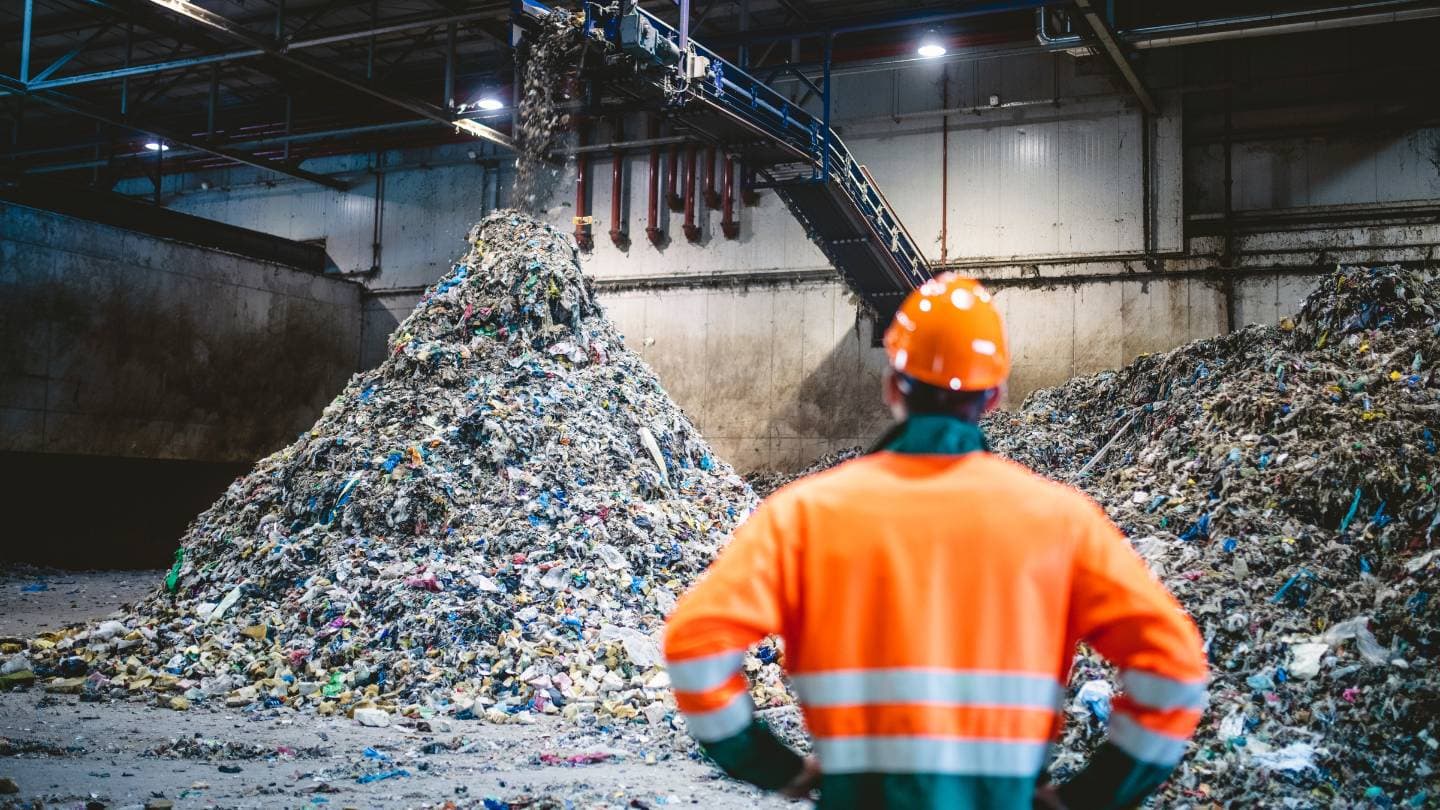
Benefits of Upcycling:
- Waste Minimization: Upcycling repurposes discarded items, giving them a new life. This reduces the volume of waste entering landfills and minimizes the need for additional raw materials in creating new products.
- Creative Innovation: Upcycling encourages creativity and innovation as artists and designers find novel ways to transform waste into aesthetically pleasing and functional items. This process adds value to materials that might otherwise be considered useless.
- Unique and Customizable Products: Upcycled products are often unique and one-of-a-kind. This uniqueness appeals to consumers seeking individuality and the opportunity to own items with a story behind them. Upcycling allows for customization and personalization in ways mass-produced goods cannot offer.
- Reduction of Environmental Impact: Since upcycling often requires minimal processing compared to recycling or manufacturing from raw materials, it helps reduce the overall environmental impact of producing and disposing of goods.
- Educational Value: Upcycling initiatives can raise awareness about waste issues and the potential for creativity in addressing environmental challenges. Such projects serve as educational tools, inspiring individuals to rethink their relationship with waste.
- Economic and Entrepreneurial Opportunities: Upcycling can create economic opportunities for entrepreneurs and small businesses. It fosters the development of niche markets for unique, upcycled products, contributing to a more diversified and sustainable economy.
Recycling and upcycling, when combined, contribute to the broader goal of achieving a circular economy—a system where resources are used efficiently, waste is minimized, and the environmental impact of consumption is reduced. These practices represent sustainable alternatives that align with conservation principles, efficiency, and responsible resource management.
Conclusion
Garbage collection is a key player in the field of waste management, which has grown in significance in the age of eco-consciousness and sustainable lifestyles. Due to the increasing garbage in landfills and the pollution of the oceans, recycling and upcycling have emerged as crucial components of waste management strategies.
Now more than ever, landfills are known to be really bad for the environment, harming things like soil and groundwater quality and making climate change worse. Plastic and garbage pollute marine environments, which is another major problem.
Conventional garbage disposal techniques, such landfilling and incineration, are not only inefficient but also detrimental to the environment and the economy. In order to lessen the negative effects of waste on the environment and promote a circular economy, garbage collection services have evolved to incorporate recycling and upcycling activities.
To keep materials out of landfills and extend their useful life, recycling is an essential component of sustainable waste management. Junk haulers gather recyclables, sort them, and then carry them to processing plants where they go through different procedures depending on what they are.
Upcycling is the practice of reusing or recycling materials in order to make new goods with improved aesthetic or practical value. This helps make things that are both one-of-a-kind and long-lasting, which in turn reduces waste.
Creative people and artists work with waste management companies to collect items that can be used to create sculptures, installations, and other types of art. Products that have been functionally upcycled have a longer lifespan and are more valuable, which increases their desirability and marketability.
Economic opportunities, less pollution, energy savings, unique and customizable goods, reduced waste, and conservation of biodiversity are some of the benefits of recycling and upcycling. By reusing and recycling items instead of throwing them away, upcycling helps lessen the toll that manufacturing and disposal take on the environment. Additionally, it has educational value by bringing attention to waste issues and the possibility of innovative solutions to environmental problems.
Content Summary
- Waste management is crucial for a cleaner, healthier Earth in the era of sustainable lifestyles.
- Garbage collection involves recycling and upcycling, playing a pivotal role in the environmental landscape.
- Landfills and ocean pollution pose unprecedented challenges, necessitating a shift from harmful disposal practices.
- Recycling and upcycling emerge as essential components, responding to the urgent need for creative waste management solutions.
- Landfills, once convenient, now contribute significantly to environmental degradation.
- Soil and groundwater contamination and methane emissions underscore the need for alternative waste management strategies.
- Oceans, vital to the planet, suffer from unsustainable waste practices, leading to contamination and the formation of garbage patches.
- Interconnectedness between land-based waste disposal and ocean pollution emphasizes the severity of the issue.
- Traditional methods like landfilling and incineration prove ecologically harmful and economically unsustainable.
- Urgency prompts a reevaluation, advocating for innovative and sustainable waste management solutions.
- Trash removal services evolve from waste transporters to proactive agents in addressing the garbage catastrophe.
- Adoption of recycling and upcycling signifies a commitment to breaking free from linear resource consumption models.
- Recycling systematically collects, sorts, and transports materials, diverting them from landfills.
- Materials like paper, plastic, glass, and metals undergo processes that transform them into new products.
- Rubbish removal services initiate recycling by collecting and carefully sorting waste.
- Advanced technologies streamline sorting, ensuring efficient categorization based on material composition.
- Eco-friendly transportation is crucial as recyclables are transported to specialized facilities.
- These facilities refine sorting and prepare materials for subsequent recycling stages.
- Materials undergo distinct processes based on type, preserving integrity while creating new products.
- Recycling reduces demand for virgin resources and contributes to a circular economy.
- Upcycling adds value by repurposing discarded items aesthetically or functionally.
- Artistic and functional upcycling reduces waste volume and fosters creativity.
- Circular economy principles, emphasizing endless repurposing in a closed loop, guide comprehensive waste management.
- Recycling and upcycling within this model reduce trash pollution and encourage sustainable consumption.
- Beyond physical waste removal, services educate the public on responsible disposal and recycling benefits.
- Outreach programs, workshops, and campaigns raise awareness and empower informed choices.
- Rubbish removal services engage in strategic outreach to educate about responsible waste disposal.
- Disseminating information fosters heightened environmental consciousness among communities.
- Workshops provide practical knowledge on sorting waste, recycling processes, and upcycling benefits.
- Hands-on experiences and expert insights empower active participation in sustainable waste practices.
- Leveraging various channels, rubbish removal services run campaigns on waste's environmental impact.
- Crafting compelling narratives captures public attention and instigates positive behavioral changes.
- Rubbish removal services elucidate direct and indirect consequences of improper waste disposal.
- Public education motivates responsible waste disposal habits, understanding the interconnectedness with ecosystem health.
- Educational initiatives equip communities with knowledge and tools for active participation in sustainable waste practices.
- Fostering responsibility contributes to building a more sustainable and environmentally conscious society.
- Challenges like contamination and lack of awareness present opportunities for innovation, investment, and policy development.
- Addressing challenges strengthens the foundation for a circular economy.
- Recycling conserves resources, saves energy, and reduces waste, contributing to economic growth.
- Upcycling minimizes waste volume, encourages creativity, and creates unique, customizable products.
- Recycling and upcycling contribute to a circular economy, aligning with conservation, efficiency, and responsible resource management.
- These sustainable practices pave the way for a greener, more sustainable future, reducing demand for limited resources and promoting environmental autonomy.
Frequently Asked Questions
Professional trash removal services may manage domestic items, building debris, green garbage, electronic waste, and dangerous materials. They can handle many waste types and recycle or dispose of them.
Waste removal prices depend on volume, type, and location. Some firms charge by the amount of trash space in their trucks, while others offer fixed rates or customised quotes based on task requirements.
Professional trash removal services often recycle. To find recyclables, they actively sort at the collecting location. These things are recycled, helping sustainability and lowering waste disposal's environmental impact.
Scheduling trash removal is usually easy. Most services offer online or phone booking for convenient pickup times. Many removal firms attempt to respond quickly, especially for critical situations like relocation or building.
Professional trash hauliers handle dangerous materials legally and securely. Compliance with local legislation is ensured by thorough identification, containment, and disposal methods.
